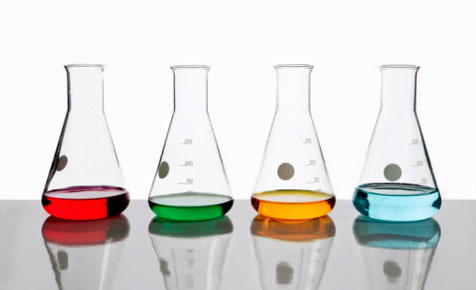Science and Technology Current Affairs March 2017
Researchers Created World’s First Heat-Driven Transistor
- The researchers created world’s first heat-driven transistor on January 31, 2017.
- Heat-gated transistor consists of an electrolyte-gated transistor and an ionic thermoelectric super capacitor.
- In the capacitor, heat is converted to electricity, which can then be stored in the capacitor until it is needed.
- The liquid electrolyte consists of ions and conducting polymer molecules.
- The positively charged ions are small and move rapidly, while the negatively charged polymer molecules are large and heavy. When one side is heated, the ions move rapidly towards the cold side and a voltage difference arises.
Physicists Created a New Form of Hydrogen
- The physicists confirmed the existence of hydrogen ion dusters some 40 years ago, and while a negative counterpart to these clusters boasting large numbers of atoms were theorized on January 19, 2017.
- Hydrogen makes up 75% of all the mass in the Universe, and more than 90 percent of all the atom’s.
- To understand what negatively charged hydrogen clusters are, you first have to wrap your head around ‘ their far more common counterparts — positively charged hydrogen dusters.
- Positively charged hydrogen dusters are pretty much exactly what they sound like — positively charged dusters of a few or many hydrogen molecules.
India became Associate Member of CERN
- India became an associate member of the European Organisation for Nuclear Research (CERN), the world’s largest nudear and partide physics laboratory on January 17, 2017.
- Becoming Associate Member of CERN will enhance participation of young sdentists and engineers in various CERN projects.
- It will also open opportunities, for Indian industries to partidpate directly in CERNjprojects.
- The industries now can directly bag contracts for spedfied requirements of CERN. Earlier, the supply of required material components and services was in the form of kind (without any charge). Now, the companies can directly bag the order and provide the services.
- Presently, CERN has 22 member States, four assodate member States, and the observer status is given to four States and three international organisations.
Read More – Daily Current Affairs
Delhi Airport became First Airport in World to Adopt Digital Platform Arc
- Delhi Airport became the first aerodrome in the world to adopt unique performance and benchmarking digital platform. Arc, which hdps in tracking and monitoring building performance on January 10,2017.
- It is developed by Green Business Certification Inc (GBCI) and US Green Building Council (USGBC), the global certifying body for all Leadership in Energy and Environmental Design (LEED) projects.
- It will allow the airport authorities to measure improvements and benchmark performance against other green building projects around the world.
- It would also help in international benchmarking of the airport’s building performance against the best performing buildings of similar type.
Function of the Human Appendix Discovered
- The researchers say that the appendix acts as a safe house for good bacteria. The body uses this to essentially ‘reboot’ the digestive system when one suffers from a bout of dysentery or cholera on January 10, 2017.
- The scientists were led to the discovery by examining the appendices of koalas. Unlike the short human variety, the koala is famous for having an extremely long appendix.
- This aids in their diet which is almost exclusively made up of eucalyptus leaves. The human appendix acts in a similar maimer to that of koalas, it is unlikely that we will see a shrinking of the Australian marsupial’s organ any time soon.
ECOLOGY & ENVIRONMENT
Climate Change Programme in Central Himalayas Launched
- The Bombay Natural History Society (BNHS) launched climate change programme under which the first study funded by Oracle and facilitated by CAF-India, will assess the status, distribution and conservation of pheasants and finches in the Central Himalayas on January 29, 2017.
- The Himalayas hold a rich natural heritage with diverse flora and fauna enhancing the beauty of the region. The study will focus on their conservation in the context of climate change with the help of community participation.
- The Indian subcontinent is home to nearly 50 species of pheasants and 62 species of finches, with several species listed in ‘Globally Threatened’ category by IUCN.
Also Read – International Current Affairs
Rubber Soil Information System (RubSIS) for Rubber Growers Launched
- The Commerce Ministry launched Rubber Soil Information System (RubSIS), an online system for recommending application of appropriate mix of fertilizers to the specific plantations of rubber growers depending upon their soil nature on January 23, 2017.
- RubSIS, developed by Rubber Research Institute of India (RRII) under the Rubber Board in collaboration with three agencies viz. Indian Institute of Information Technology and Management, Kerala, National Bureau of Soil Survey and Land Use Planning, ICAR and National Remote Sensing Center, ISRO, brings soil data to the fingerprints of rubber growers and recommends the optimum mix and quantities of chemical fertilizers that his holding requires.
- It is a cost effective tool for sustainable ^scientific management of rubber growing soils. Apart from preventing indiscriminate use of chemical fertilizers and soil degradation, adoption of RubSIS will lead to reduction in the cost of production of rubber, increase in productivity and reduction in environmental pollution.
China built World’s Biggest Solar Farm
- China built world’s biggest solar farm on January 23, 2017. It is built at a cost of about 6 billion yuan (£ 721.3 million) and in almost constant expansion since construction began in 2013, Longyangxla now has the capacity to produce a massive 850 MW of power — enough to supply up to 200000 households.
- China’s energy agency will spend more than $ 360 billion on renewable energy sources such as solar and wind by 2020, cutting smog levels, carbon emissions and creating 13 million jobs in the process.




